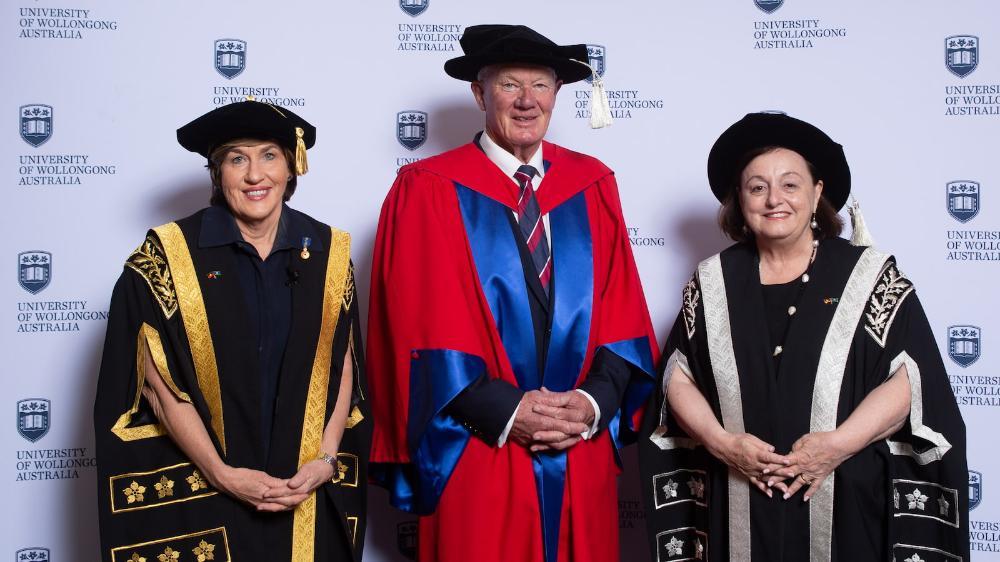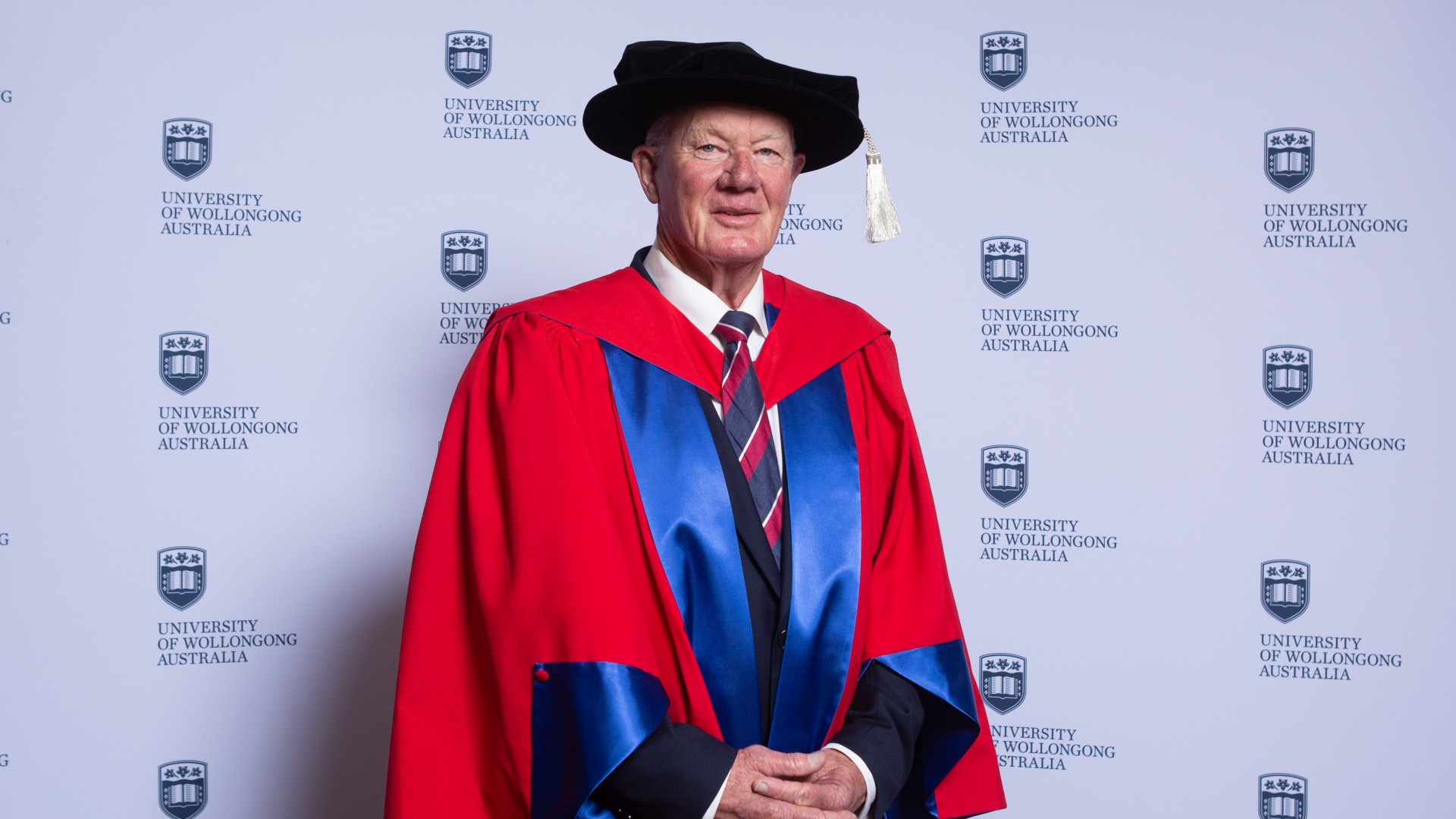November 6, 2023
Distinguished diabetes researcher and physician recognised with Honorary Doctorate
Dr Robert Moses at the forefront of gestational diabetes care
When Dr Robert Moses OAM finished school at the tender age of 16, he begged his parents to let him go back the following year to see if he could do better.
“I always had a passion for history and when I came only third in the state for modern history, I begged my parents to send me back to school for another year,” he said.
“They sensibly refused. I had the marks in the leaving certificate to do medicine, so that’s what I did.”
He was just 22 when he finished his six-year medical degree at the University of Sydney, and four years later was one of the youngest people to be accepted into the Royal Australian College of Physicians.
Although he downplays his contribution to the field of endocrinology and more specifically gestational diabetes, Dr Moses has been at the forefront of research worldwide, and is now adding a Doctor of Science, honoris causa, for his contribution to medicine, academia, and the community to his long list of accomplishments.
“When I was doing my specialist training years, I was working with an endocrinologist at the Prince of Wales Hospital in Sydney,” he said.
“In the 1970s when I was doing my training, I worked as a general physician in a hospital and was lucky enough to be acknowledged as having an interest in endocrinology.”
Dr Moses said following his appointment as an endocrinologist physician, career, life, and family took precedence, but he never lost his passion for history and in his 40s decided he’d go back to study and complete a Bachelor of Arts, this time at the University of Wollongong (UOW).
After completing that in 1991 he went on to then complete a Master of Science in 1995.
“I was in solo private practice and had an interest in epidemiological research, so I put together a few things from what I had been seeing in my practice and got a Master of Science,” he said.
“I had an interest in diabetes and back then there was a big increase in the rate of diabetes in my practice.
“I had kept data on more than 3600 patients with diabetes in pregnancy, and this became the basis for my research.
“You get ideas [for research] from sometimes strange areas. The office in my practice was at the end of a long corridor and I had this idea ringing a bell in my head.
“I started an experiment, seeing how tall the women were that were coming in to see me for gestational diabetes, and how long their legs were.
“I discovered that people who develop diabetes have shorter legs in comparison to their body length.”

Gestational diabetes seemed more common in hotter weather, and this led to research with the university about the effect of temperature on the diagnosis of gestational diabetes.
The results of these studies, and many others, were written up in major medical journals.
These observational studies, and many others in diverse areas, led him to have his ongoing research accepted in more than 100 other publications.
He began to develop a primary interest in gestational diabetes and to use the data generated in private practice to publish extensively on this subject.
In 1998 he became a part-time staff specialist and accepted an honorary professorial appointment with UOW and in 2000, Dr Moses was awarded an Doctor of Medicine (MD) from the University of Sydney for his work on gestation diabetes mellitus (GDM).
In 1999 he was approached by a colleague working in the pharmaceutical industry who recruited him to undertake a series of clinical trials.
“From 2000, I started to do clinical trials in my private practice and became the principal investigator of diabetes clinical trials in the Illawarra,” he said.
His contributions to the field of diabetes care have been extensive and ongoing.
In 2009 he became the Chair of the Writing Group for the International Diabetes Federation Guidelines of “Diabetes in Pregnancy”.
In 2012 he played a major role in writing the GDM guidelines for the World Health Organisation.
As well as the position of Clinical Professor, at the University of Wollongong, Dr Moses held the position of Director of Diabetes Services for the Illawarra Area Health Service, endocrinologist for the Health Service, and principal investigator, Clinical Trial and Research Unit for the Illawarra Diabetes Service.
His work has seen him awarded an honorary life membership with the Australian Diabetes Society, as well as a lifetime achievement award from the society in 2021.
In 2007 he was awarded the Medal of the Order of Australia for service to medicine in the field of endocrinology, particularly in the area of gestational diabetes.
For 13 years Dr Moses was an associate editor of Diabetes Care, the world’s leading journal about diabetes, with primary responsibility for submissions concerned with pregnancy.
Although he retired from practice, he continues in this part-time role and is prominent in national and international bodies related to diabetes in pregnancy.
As a clinical professor at UOW, Dr Moses has played a pivotal role in shaping the academic landscape and fostering a culture of excellence.
His teaching, research, and clinical supervision have enriched the academic experience of countless students and his mentorship and guidance have not only produced exceptional medical professionals but have also elevated the reputation of UOW as a centre of excellence in medical education.
“I feel very privileged to be receiving this honour for the University of Wollongong. It not only recognises me for the things I have done but also allows me to recognise the University and encourage more people to continue the work in this area.”
